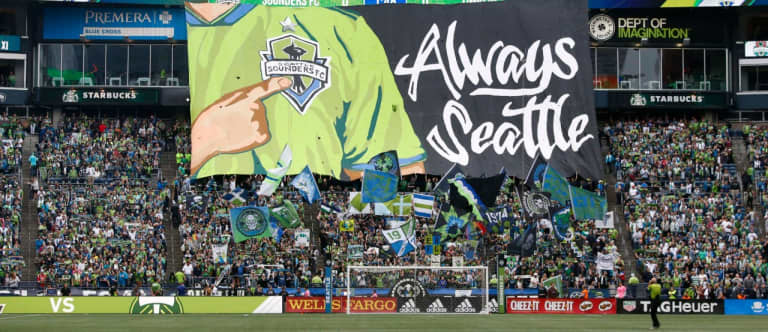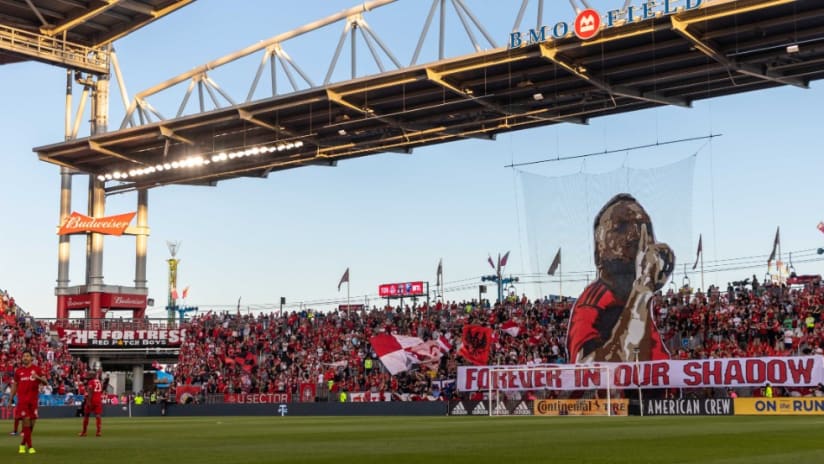TORONTO — Two clubs who helped usher in the modern standard for Major League Soccer supporters will meet in the 2019 MLS Cup Sunday at CenturyLink Field (3 pm ET | ABC, Univision, TUDN, TSN, TVAS).
Success on the field has led Toronto FC and the Seattle Sounders to a third meeting in this final in four seasons. But before either won their first league title, both teams' followers were responsible for birthing the modern era of North American club fandom.
Toronto came first, with the inspiration tied to the club's identity being revealed while the 2006 FIFA World Cup was kicking off in Germany. Fans of the world's game in one of North America's most diverse city were already energized, and TFC's entrance into the league provided a vessel for that enthusiasm that was different from the rest of the city's sports scene.
“Toronto sports fandom has always been: sit in your seat, listen to the [announcer] telling you to stand up, cheer,” recalls Brad Humber, leader of the Red Patch Boys Away Team and coordinator of TFC supporter away trips. “When TFC started there were no real rules for supporting: it was go out, have some fun in the sun, drink some beers. And different from other kind of sports it was more of a community, more like a family; a neighborhood barbecue but every game.”
Reds fans' weren't the first in the league to use the nature of the sport — one without natural stoppages in play, organists or in-game music — to try and create their own stadium soundtrack. Pockets of such vocal support already existed across the league, perhaps most notably with D.C. United's Barra Brava and Screaming Eagles, as well as Chicago Fire's Section 8. but when BMO Field was in full voice come 2007, support became a spectacle unto itself.
“When Toronto came in, supporters wanted to try something different and were given the ability to have streamers or other objects in a sporting environment that you couldn’t bring in – drums, those kind of things,” explained Humber. “If you go to a Leafs game or Raptors game, the only thing you’re bring is those little clappers. Opening up a real environment of, ‘Do what you want – within reason of course;’ to let loose and have fun.”
The scenes quickly proved infectious across the US and Canada, and nowhere moreso than when the Seattle Sounders began their club's MLS era in 2009.

The Seattle Sounders supporters didn't copy what Toronto FC fans did, but they did use it as inspiration, says Red Patch Boys Away Team leader Brad Humber | USA Today Sports Images
“A lot of people say that Seattle copied us," Humber said. "I wouldn’t want to say [that], but they saw the passion that can be done within North America: what 1,500 traveling supporters can do when they go to Columbus, like TFC supporters did [in 2008], fill out one section of a stadium and how amazing it looks. People see that and want to replicate that.”
Supporters of the Sounders, who had previously enjoyed a long lifespan across the NASL and more recently the USL, used their pre-MLS days as a runway to take MLS support to yet another level, especially in terms of numbers, instantly becoming the league's annual attendance leaders.
“Seattle is a big sports town," Humber said. "They love their football with the Seahawks. Would they be able to fill a stadium with 40-50 000 people? They’ve done it.”
And it has only been further replicated and built upon since.
“Same for Atlanta [United],” added Humber. “It’s just grown from us to Seattle to Atlanta to LAFC.”
Where Toronto fans came together casually, Seattle, with their Alliance Council, Constitution, and Charter, formalized it.
“Seattle had more time to see what was being done in Toronto and improve on that,” added Humber. “When Toronto came in, it was brand new, didn’t have anything to base themselves off of. Toronto supporters were doing what they thought was the way to do things.”













